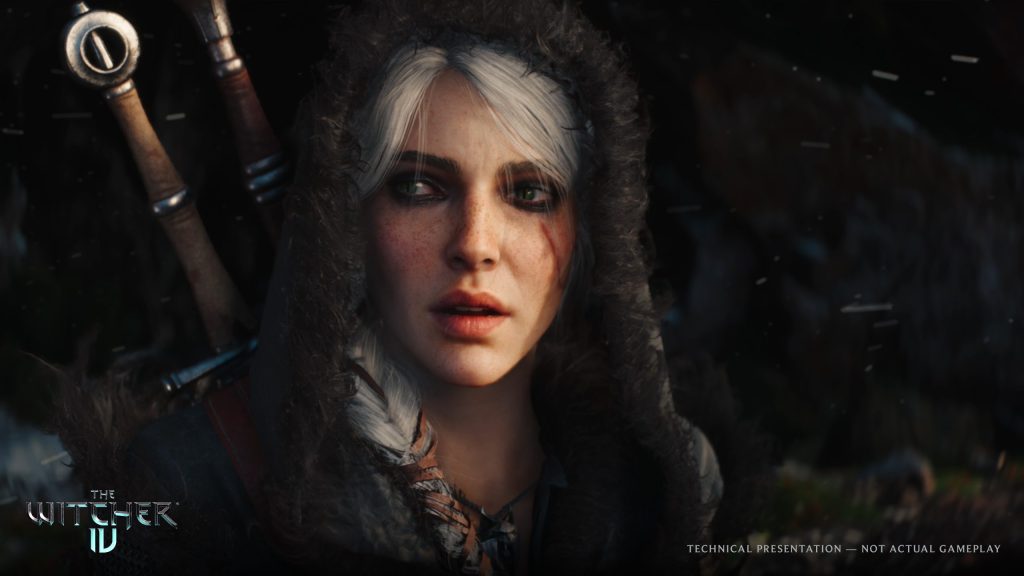The anticipation surrounding the next installment in The Witcher franchise, tentatively named The Witcher 4, has reached a fever pitch following an impressive demo showcased during the State of Unreal event earlier this month. The demo not only highlighted the game’s visually stunning graphics but also hinted at the ambitious technical goals set by CD Projekt RED, the studio behind the beloved series. Digital Foundry’s Alex Battaglia had the rare opportunity to travel to Poland and engage in a detailed discussion with the team about the intricate development process and the challenges they foresee in bringing this open-world game to life.
A Shift to Console-First Development
One of the most significant revelations from the interview was CD Projekt RED’s strategic pivot towards a console-first development approach. Charles Tremblay, the VP of Technology at the studio, emphasized that this decision was driven by their desire to achieve a stable 60 frames per second (FPS) performance on the PlayStation 5. This marks a departure from their traditional method of developing for PC first and then scaling down to fit consoles, which had posed numerous challenges in previous projects.
“When we started the collaboration, we had super high ambitions for this project. We always do PC and we push and then we try to scale down… but then we had so many problems in the past,” Tremblay explained. This time, the team has committed to fully exploring the capabilities of the console hardware before expanding to PC. The focus is squarely on delivering a rich gaming experience without reverting to a lower frame rate. “We really wanted to aim for 60 fps and not go back to 30 fps,” he added, setting a high bar for their technical objectives.
Challenges and Optimizations Ahead
While the demo has garnered praise for its graphical fidelity, Tremblay acknowledged that extensive work still lies ahead. He clarified that the demonstration is merely a tech demo, lacking full gameplay mechanics such as combat and other essential elements. “At this stage, we are perfectly aware that we still have a lot of work ahead of us… It’s hard to say if we manage to nail it, but we’ll work as hard as we can to make it for sure,” he stated, reflecting the team’s commitment to overcoming the hurdles that remain.
Interestingly, the Xbox Series S presents an additional layer of complexity. Tremblay revealed that the developers have yet to optimize The Witcher 4 for this specific console, which he described as “extremely challenging” for achieving 60 FPS performance. The team understands the limitations of the Series S and aims to tackle these obstacles in their development roadmap. Tremblay commented, “I wish we did a lot of work already on that, but we did not, so this is something that is next on our radar for sure.”
Technological Innovations and Future Plans
A key highlight of the technological advancements showcased in the demo is CD Projekt RED’s inclusion of hardware ray tracing using Unreal Engine 5’s Lumen technology. This marks a departure from the software-based Lumen ray tracing, which Epic Games considers outdated due to its performance limitations. Tremblay indicated that the studio would also focus on scaling the game’s performance for high-end PCs, though the specifics of how this will be implemented remain unclear at this stage.
The Witcher 4 is currently slated for release in 2027 across platforms, including PC, PlayStation 5, and Xbox Series S|X. The ambition to harness the full power of next-gen consoles comes with expectations that the open-world environments will not only look incredible but also run smoothly. The release window allows the team ample time to iron out the technical challenges, improve performance, and perhaps even integrate community feedback into the development process.
Industry Context
The transition to a console-first approach in game development is indicative of broader industry trends, especially as gaming hardware becomes more sophisticated. As companies like CD Projekt RED strive to push the boundaries of interactive graphics while ensuring playable frame rates, this shift may influence how other developers structure their production workflows. Reports indicate that the demand for high-performance gaming experiences has led to a resurgence in interest in optimizing games for specific platforms before considering broader scalability.
Furthermore, according to a recent market analysis by Statista, nearly 60% of players prioritize graphics quality and frame rates, which suggests that CD Projekt RED’s strategy may resonate well with their audience’s expectations.
This dedication to performance and quality exemplifies the level of ambition that CD Projekt RED holds for The Witcher 4, ensuring that gamers will have a richly immersive experience that could redefine open-world adventures in the years to come.
Quick Reference Table
| Feature | Details |
|---|---|
| Development Approach | Console-first |
| Target FPS | 60 FPS on PS5 |
| Current Platforms | PC, PS5, Xbox Series S|X |
| Planned Release Year | 2027 |
| Technical Focus | Hardware ray tracing with Unreal Engine 5 |
| Development Challenges | Optimizing for Xbox Series S |

